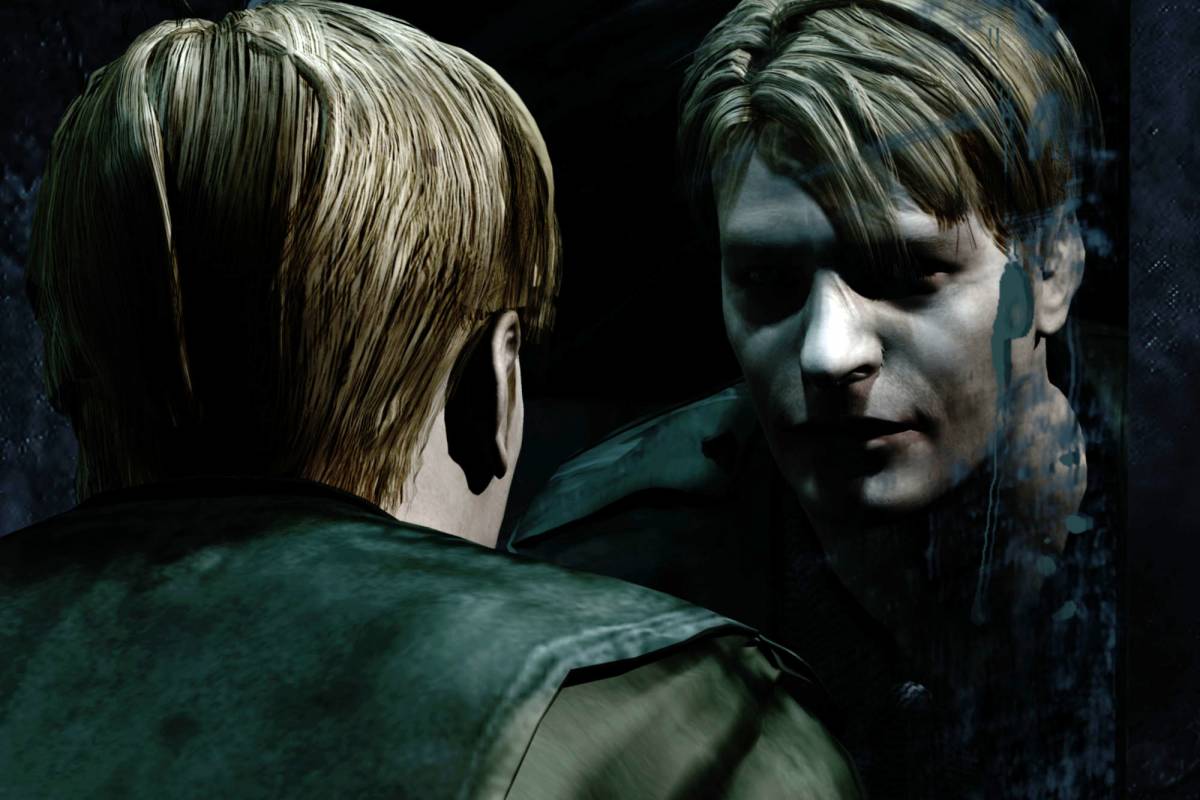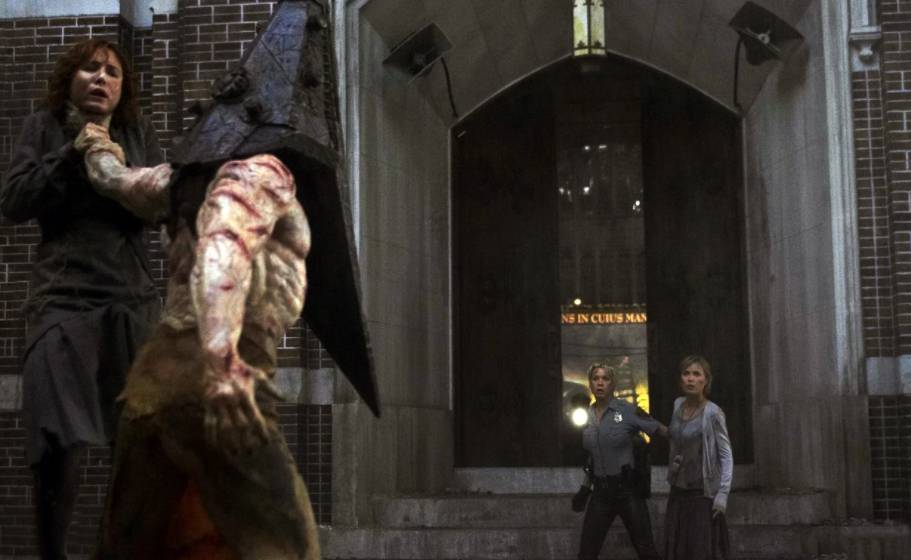Another year, another video game film adaptation. To make matters worse, it’s a reboot; a reboot of a film franchise that’s not even 20 years old. I am of course referring to the Tomb Raider film starring the ever-vivacious Alicia Vikander as the titular tomb-traversing heroine. But hey, maybe this film will be better than the previous celluloid incarnation. With the video game’s recent reimagining being praised, and this new adaptation featuring an Oscar-winning actress with greater emotional range than just the ice-cold death-glare of Angelina Jolie, things are looking promising.
Indeed, while video games have developed into an art form, their film adaptations have followed a shakier critical trajectory (i.e. Uwe Boll). However, I believe this genre is not entirely bereft of good-quality movies; my main argument for this is the Silent Hill film. When this movie was released in 2006, I was instantly entranced. While I initially found it difficult to verbalise what made it so captivating, from repeat viewings over the past 12 years I feel I am now able to highlight the five aspects that made it so memorable to not only me, but gamers and moviegoers alike.
1. Source Material
A significant advantage this film has is the excellent quality of its source material. When Silent Hill was released in 1999, it was praised for its great storytelling and effective scares, with the all-encompassing feeling of dread and isolation becoming the series’ hallmark. So naturally the film had a great template with which to work.
However, while the film largely follows the video game, it takes some creative liberties that – mostly – pay off. These range from small enhancements, such as substituting the snowfall for ash generated by the coal fires burning underneath the town, to the transformation of the story’s protagonist (now a mother), and fleshing out of the antagonists’ origins – the settlement’s founding fathers are depicted as über-religious witch-hunting vigilantes. By knowing which aspects to recreate and which to alter, the film’s producers enhanced the movie’s visual experience for all.
2. Characters
As mentioned above, the film features various characters with some lifted straight from the video game, and others either altered or created especially for the big screen. The most obvious change is that of the protagonist from Harry Mason (father to the young girl Cheryl) to Rose Da Silva who is the mother of this same child, now named (the more celluloid-friendly?) Sharon. Additionally, the video game character Dahlia Gillespie is split into two personalities: one being a crazed, grief-stricken mother who has lost her child, the other the leader of the town’s religious cult. And I can’t forget Colin the loveable Janitor, who was created just for the film…
These changes, I believe, benefit the film and lend greater emotional depth to its messages regarding the loss of innocence, protecting your child from malevolent forces, and witch-hunts by the town’s cult. Another dominant theme is the special relationship between mother and daughter. Indeed, Police Officer Cybil Bennett remarks to Rose “Mother is God in the eyes of a child.” This sentiment is demonstrated throughout the film, tying neatly into its religious overtones that are a general depiction of those themes ingrained in the video games.
At the same time the characters of Harry and Cybil also play important roles within the film. While Cybil largely adheres to her video game personality, Harry’s role now is to search for his family and find out what caused the town’s descent into hell. Ultimately, while Harry fits into the story and helps advance the narrative – largely filling in the audience on the settlement’s dark past – he isn’t as interesting as he could have been; this I admit is one of my few gripes with the film.
3. Setting, Atmosphere and Tone
While these characters are integral to both the video game and its big screen adaptation, many consider the town itself to be the main character; this perspective has only gained further credence as the video game series has progressed. Consequently, the film faced a daunting task in bringing the foggy, deserted, and demonic town to life, and I believe the production team achieved this.
To elevate the recreation of the video game’s setting, the film took inspiration from the real-life town of Centralia, Pennsylvania. In 1962 this mining settlement was abandoned after the coal veins underneath caught fire and spewed forth toxic fumes. This phenomenon is referenced when we see Rose awaken to the sleepy town’s ash-filled sky. Consequently, we cannot help but feel the same sense of bewilderment, wonder, dread and overwhelming terror (in that order) as we delve deeper into Silent Hill. Overall I think this is a great example of a movie improving upon its source material by making just a slight amendment to it.
4. Costumes and Special Effects
While the characters (including the town itself) within the film are excellent, it’s worth mentioning the superb job the costumes and special effects do of bringing the Otherworld and its abhorrent creations to life. From Cybil’s police uniform and Christabella’s religious garb, to Dahlia Gillespie’s ashen-grey, tattered dress, the movie does a sterling job of sartorially recreating the video game characters. Additionally, attention needs to be drawn to the high level of detail put into Rose’s outfit. To reflect the change in dimensions the colour of Rose’s clothes shift from their original beige tone to grey to blood-red and all shades in-between. In fact, during production over 100 versions of Rose’s ensemble were produced, with each differing only slightly in colour so that the change occurs subtly throughout the movie.
However, it’s not only the human characters that benefit from this admirable attention to detail. When recreating the series’ horrific hell-beasts, very little CGI was needed as the costumes and makeup did a fantastic job in transporting these monsters to celluloid. In particular, the characters’ terrifying encounter with the series’ pin-up Pyramid Head, the sequence where Rose must navigate past the hospital’s hideously deformed nurses, and when we meet the cursed Colin are all standout moments. And to achieve this movie magic, all that was required were some professional dancers, latex, rusty blades, and a colourful contortionist.
Finally, the film does a spectacular job of showcasing the town’s transition between worlds. A third of the way through the film we see its full transformation from a grey, deserted settlement to a devil’s playground of industrial waste and hellfire filled with nightmarish creatures. With this transformation the sky darkens and the fabric of – still arguably – reality peels away to reveal the hellish Otherworld. This sequence is visually mesmerising and superbly expands upon the mysterious but terrifyingly memorable change in atmosphere and environment that was introduced to our cultural consciousness by the original Silent Hill.
5. Score and Sound Design
Many believe the soul of Silent Hill is its music, and it’s implemented excellently at key points during the film. In fact, the only song heard that’s not from the series’ soundtrack is Johnny Cash’s Ring of Fire. From the dream-like piece playing as Rose awakens from her car accident and enters the eponymous town, to the industrial cacophony heard during the initial descent into the hellish Otherworld, and even the repeated refrain of the same simple piano piece to pique the viewer’s attention when Rose finds a clue leading her to her daughter Sharon, the games’ music is inserted expertly into the movie, lending it greater emotional gravitas. And you just know that when that air-raid siren sounds off that the nightmare is coming again…
Of all the film’s components, it is the score that helps elevate it from a mediocre production to a viewing experience that resonates not only with fans, but also the wider movie-going public.
You’ll Never Leave…
As I’m sure you’ve noticed by now, I consider the Silent Hill film to not only be one of the best video game movie adaptations, but also a great film based on its own artistic merit. From the faithful recreation of the video game’s tone, atmosphere, setting, and score, to the little alterations that enrich the fictional universe, these various aspects work together to create both a terrifying and memorable viewing experience.
However, I am not above recognising that the film is far from perfect. The final sequence does go overboard in its execution and hammers home – with a mallet – the movie’s themes, some of the characters are under-utilised, and the ambiguous ending no doubt angered some. Yet while it isn’t Oscar-worthy, it’s certainly not as derivative as the Resident Evil movies (though they do hold a special place in my heart!).
Ultimately, I leave it to you to judge this film for yourself. But I do feel that fans of the video games will thoroughly enjoy it (if they’ve not already seen it) and newcomers to this quaint, sleepy New England town may just find themselves enjoying their stay a little more than expected.
Just please don’t ask me to comment on the film’s sequel. It is genuinely terrible.
Some of the coverage you find on Cultured Vultures contains affiliate links, which provide us with small commissions based on purchases made from visiting our site.




